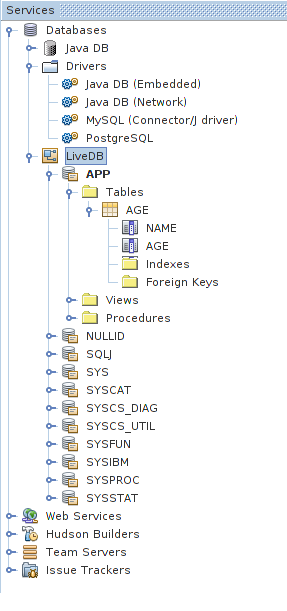LiveDB
From APIDesign
(→Get the sources) |
(→Create a database) |
||
| Line 20: | Line 20: | ||
== Create a database == | == Create a database == | ||
| - | Start Derby database as explained for example at [http://netbeans.org/kb/docs/ide/java-db.html JavaDB tutorial]. Create a table called AGE: | + | Start Derby database as explained for example at [http://netbeans.org/kb/docs/ide/java-db.html JavaDB tutorial]. Create a table called AGE with two columns NAME and AGE: |
| + | |||
| + | [[Image:Livedb.png]] | ||
Revision as of 21:03, 14 July 2010
Another use of AnnotationProcessors (in addition to generate CompileTimeCaches) is to provide type-safe, compile-time view of a live database structure. Something that might be called JavaOnRails.
For a while languages like Ruby or Groovy has been blessed for being able to easily access structures in databases without all the hassle associated with traditional object relational mapping needed in Java. Maybe there was something more in the whole rails hype, but for me, rails mean exactly this. Be able to see content of LiveDB.
This page describes my first experiment showing how to do something similar in old good Java. Well, it is not old good Java, but Java6. That version of Java is still few years old, but good ideas take time. That is why we are only slowly recognizing how useful AnnotationProcessors can be.
Get the sources
Right now I have sources in a branch, as not everything is automated (I don't know how to start Derby automatically yet):
$ hg clone -r livedb http://source.apidesign.org/hg/apidesign/ $ cd apidesign $ hg pull $ hg update livedb
The right project is located in samples/livedb directory.
Create a database
Start Derby database as explained for example at JavaDB tutorial. Create a table called AGE with two columns NAME and AGE:


